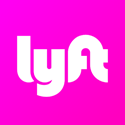The way people commute and travel nowadays has changed since the upsurge of the best ride sharing apps. With the increase in smartphone users, a flood of carpooling apps is transforming how consumers hail rides. Ride sharing is an eco-friendly mode of commuting and traveling that people worldwide are choosing. Read More
List of Best Ride Sharing Apps in 2024
Lyft
Uber
Bridj
BlaBlaCar
Careem
GoKid Carpool
Via - Smarter mobility
Curb
Grab
Cabify
Different Types of Ridesharing Apps
1. Peer-to-Peer Ridesharing
The first and foremost is the peer-to-peer (P2P) ridesharing apps. This type of ridesharing is similar to getting a taxi. However, the difference is you do it via an app.
Popular apps like Uber and Lyft are a part of peer-to-peer ridesharing apps. Moreover, these apps are preferred by the masses. The main reason is that they're easy to use, cheaper than taxis, and allow you to see the driver's location in real time.
2. Carpooling Services
Next in types of ridesharing comes carpooling. It is not a new mode of transportation but a traditional practice enhanced by technology and apps. Carpooling refers to sharing a ride with others in the same way.
Apps like Waze Carpool and BlaBlaCar are great examples. The benefit of carpooling is that everyone shares the cost. Also, Carpooling is good for the environment because it means fewer cars on the road, which helps reduce pollution and traffic congestion. These apps let you choose rides based on what time you want to leave and who you want to ride with.
3. On-Demand Ride Services
On-demand services are also a great option for convenient ride sharing. However, this method differs from calling a taxi or finding one on the street. It allows you to choose the kind of ride you want and also provides an ETA to give an accurate estimation.
Apps like UberX and Lyft let you choose your pickup and drop-off locations without physically interacting with the driver. The popularity of these apps is well founded as they're reliable and let you rate your driver. Thus, it helps to keep the quality of service consistent.
4. Luxury and Executive Rides
For those times you want to travel in style, there are luxury rides. Services like Uber Black or Lyft Lux offer fancy cars and professional drivers. Whether you're going to a business meeting or a fancy event or just want to treat yourself, these services provide a more upscale experience. They cost more, but you get a cool car and extra comforts.
5. Niche Ridesharing Services
There are also special ridesharing services for specific needs. For example, some apps focus on safe rides for kids, like getting them to school or activities. These services ensure drivers are carefully checked and include extra safety features. There are also rides for people who need wheelchair-accessible vehicles, making sure everyone has a way to get around.
Common Features of Ride sharing Apps
- User Profiles - Firstly, user profiles are fundamental for ride-share apps. It allows riders and drivers to register and provide necessary information. This data can be names, photos, and payment details. Something that would allow both parties to communicate with each other. These profiles also include ratings and reviews. Thus, fostering trust within the community.
- Real-time Tracking - GPS and location tracking are among the most important features for ride sharing. Essentially, this feature can make or break the app. Its importance lies in the fact that it uses GPS to pinpoint your location. When you request a ride, drivers nearby will be notified. Thus, enabling them to respond swiftly. Furthermore, location tracking apps also help users track the driver’s progress as they approach your location, providing transparency and enhancing safety.
- Integrated Payments - In-app payment gateways are game-changers for rideshare apps. It helps negate the need for cash transactions and features effortless payments via the app itself. Users can link a credit card, debit card, or e-wallet to their profile. Then, users can automatically pay for your ride at the end of the trip. This not only streamlines the payment process but also ensures a receipt is sent directly to your email, simplifying record-keeping.
- Automatic Fare Calculation - Another essential feature is fare calculation and dynamic pricing. The app calculates the cost of your ride based on several factors. This can be distance, expected travel time, or local demand. Also, rides experience price surges during peak hours. While these surges encourage more drivers to get on the road, they make the rides costly for users. Nonetheless, these apps help calculate the ideal fare for users while considering these factors.
- Ensures Safety - Safety features can't be overlooked. Many ride sharing apps include options to share your ride status with friends or family, giving them your location in real time until you reach your destination. In case of emergencies, there's often a quick access button to contact local authorities directly from the app.
Conclusion
Ride sharing might have been a head-scratcher in the olden days, but it is now a simple process. Thanks to the evolution in technology and mobile app development, these apps allow users to travel easily at an affordable price. Moreover, the positive effects that these carpool apps have on the environment are nothing but good. The above list comprises the best ride sharing apps that you can use depending on your current location. You can study these apps in detail and choose the best one that fits your needs.
Lastly, if you want more information or have your own ride sharing app, you can get your product reviewed with us. Our experts will carefully evaluate your app and its USP. After analysis, we will list your app on our renowned platform, which guarantees better audience reach and engagement.
With our strategically designed marketing solutions





















